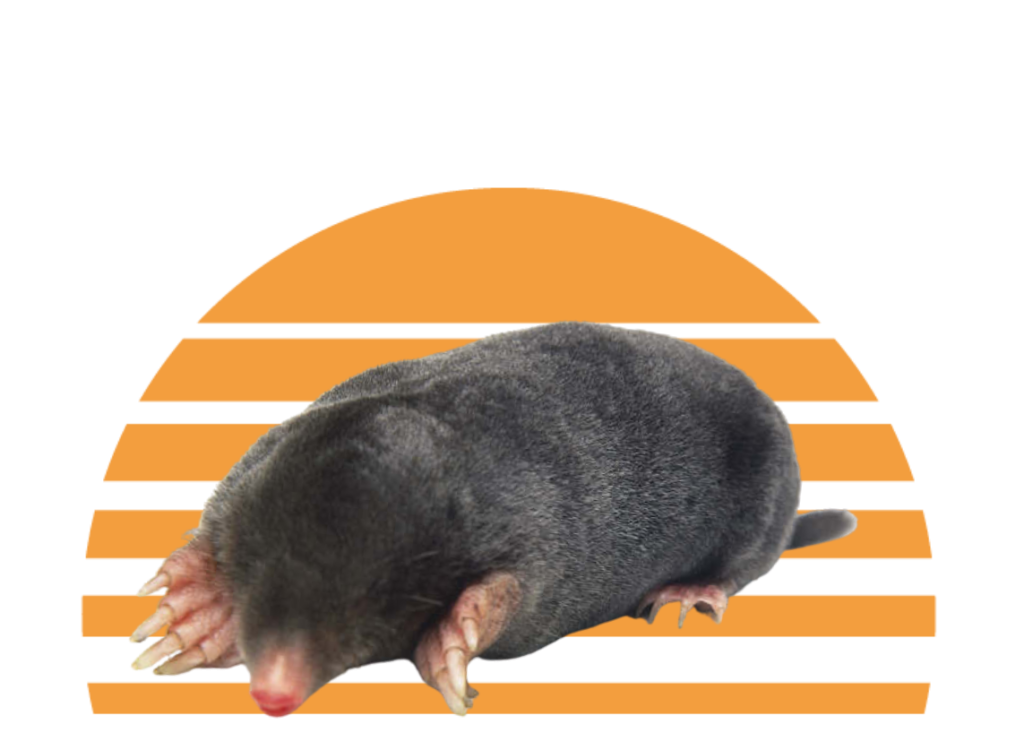Identifying Moles in Your Yard
If you are a homeowner seeking a perfect lawn, getting rid of moles is a challenge. Moles cause damage to lawns and gardens by digging and creating tunnels that disrupt root systems while feeding on earthworms and grubs. We have two types of Moles in Washington.

Mole Activity and Solutions
The most common is the Townsend’s Mole, which is active year-round. You can identify activity by the large, volcano-shaped mounds created by the expulsion of excess dirt. These mounds can ruin a picturesque lawn or garden. Sunrise has developed effective treatment methods that won’t affect the health of your yard and will safely reduce Mole activity.
There is a lot to be said about Moles. Both the Townsend’s Mole and the Coast Mole prefer fertile, organic soil. The Townsend’s Mole is the largest in the United States, growing as large as 9 inches. You can identify this Mole by its velvety blue-black fur, slender snout, sharp teeth, and short hairless tail. Its eyes and ears are barely visible.
Moles live underground in runways and burrows. These runs can be anywhere from 2 inches wide to 20 inches deep. However, Moles rarely use shallow runways after creating them. They dig these channels and highways where they get their food source, consuming roughly 40 pounds each year. With a competitive nature, and frequent tunneling, it is necessary to seek pest control service.
Sunrise combines two treatment methods to get the Moles out of your yard and keep them out. We utilize a lethal treatment that mimics a Mole’s primary food source: the earthworm. We also use non-lethal granules for mole control and get them out of the lawn.
Moles can easily take over another abandoned runway or burrow, so it is crucial to complete regular preventative treatments. It is illegal for Pest Control companies to use mole traps in Washington State. For more information about our mole control services, please call or email us.
Gophers and Moles: What's the Difference?
We have both Pocket Gophers and Moles here in Western Washington. The Townsend’s Mole is a more frequent offender, however, Gopher activity is not unheard of. Sunrise does not have any specific treatments for Gophers; if you think you are dealing with a Gopher infestation, we encourage you to reach out to the U.S.D.A. Wildlife Services.
Gophers
- Gophers are a type of Rodent.
- Longer, hairless tail (2-3 inches).
- Dig multiple burrows or burrow systems as opposed to tunnels or runways.
- Cheek pouches for storing food and building materials (this is also the reason for the “pocket” in their name).
- Push dirt to one side of exit mound.
- Burrow depth may exceed 5 or 6 feet.
Moles
- Contrary to popular belief, Moles are not Rodents.
- Smaller than a Gopher, no larger than 9 inches in length.
- Create vast runways beneath the ground.
- Small eyes and ears that are hard to see.
- Large, claw-like forefeet used to dig their tunnels.
- Short, pink, hairless tail.
- Shallow runways, rarely deeper than 20 inches.
- Volcano-shaped mounds.
DIYs That Don't Work
Looking for a child and pet safe preventative service? We provide quarterly treatments for only
We get a lot of questions about alternative treatments for Moles. Trapping or chemical treatments are typically the most effective. Below is a list of treatments that we do not recommend or are generally ineffective.
- Trying to poison the Moles with Gum or candy.
- Pouring glass shards or razor blades into the runways.
- Using naphthalene or smoke to drive the Moles out of the yard.
- Mole plants or Gopher bait.
- Windmills.
- Ultrasonic or electromagnetic devices.
For more information about the treatments that we use, as well as recommendations, advice, and answers, please contact us at the number provided below.

